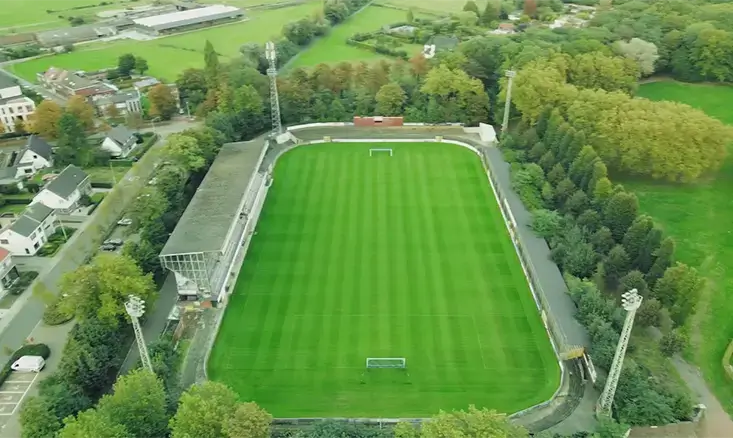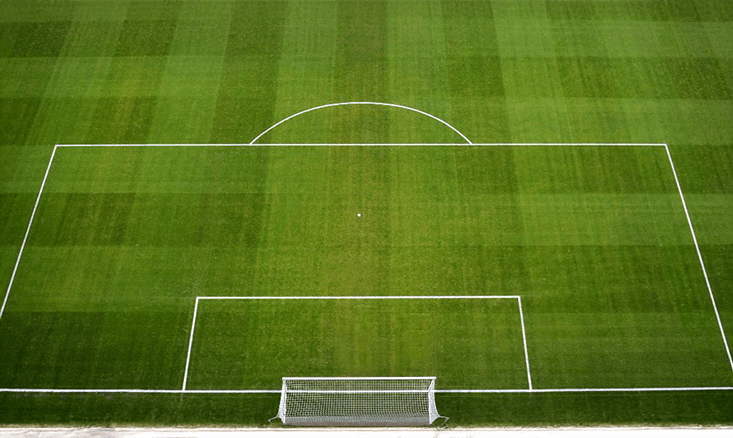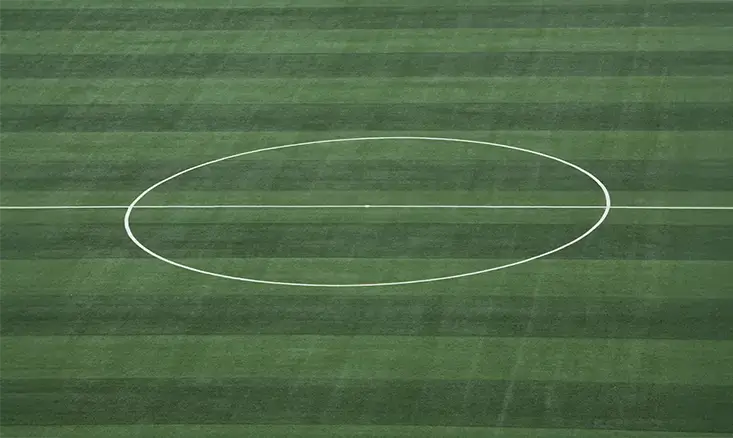The Ultimate Guide to Youth Soccer Field Dimensions and Sizes

CRFC BLOGS
LATEST BLOGS & NEWSLETTERS
The Ultimate Guide to Youth Soccer Field Dimensions and Sizes
Youth soccer is more than just a sport—it’s a crucial platform for young players to develop essential skills, teamwork, and a lifelong love for the game. However, the foundation of a successful youth soccer experience lies in one critical aspect: the field. Choosing the correct youth soccer field size is vital for fair competition, player safety, and effective skill-building.
In this guide, we’ll cover everything you need to know about youth soccer field dimensions, including sizes in meters, feet, and yards, and how they differ across age groups. We’ll also discuss the importance of proper field sizes, compliance with regulations, and practical tips for setting up fields.
Why Youth Soccer Field Dimensions Matter
A Foundation for Development
The size of a soccer field directly influences the gameplay experience. For younger players, smaller fields mean less running and more touches on the ball, helping them focus on dribbling, passing, and shooting. As players get older, larger fields introduce the complexity of positioning, spacing, and team tactics.
Ensuring Safety and Fair Play
Incorrect field dimensions can negatively impact player safety. A field that’s too large for younger players may lead to overexertion and fatigue, while a field that’s too small for older players can increase the risk of collisions and injuries. Proper youth soccer field dimensions help ensure a safe and enjoyable game for all participants.

Youth Soccer Field Sizes by Age Group
Field dimensions vary to suit players of different ages’ physical and skill levels. Below are the recommended sizes for youth soccer fields, broken down by age group and measured in meters, feet, and yards.
U5–U8: Early Skill Development (4v4 Format)
Field Size:
- Meters: 22.86–32 meters long by 13.72–22.86 meters wide.
- Feet: 75–115 feet long by 45–75 feet wide.
- Yards: 25–35 yards long by 15–25 yards wide.
Goal Size:
1.2 x 1.8 meters (4’ x 6’).
This small-sided format is designed to introduce the game to younger players in a low-pressure environment. The small field size minimizes physical demands and maximizes opportunities for ball contact, building skill development and confidence.
U9–U10: Team-Building Stage (7v7 Format)
Field Size:
- Meters: 50.29–59.44 meters long by 32–41 meters wide.
- Feet: 165–195 feet long by 105–135 feet wide.
- Yards: 55–65 yards long by 35–45 yards wide.
Goal Size:
2 x 5.6 meters (6.5’ x 18.5’).
With more players on the field, this format introduces basic team strategies and positional roles. The larger playing area helps players understand spacing and teamwork while being manageable for their age group.
U11–U12: Bridging the Gap (9v9 Format)
Field Size:
- Meters: 64–73 meters long by 41–50 meters wide.
- Feet: 210–240 feet long by 135–165 feet wide.
- Yards: 70–80 yards long by 45–55 yards wide.
Goal Size:
2.1 x 6.4 meters (7’ x 21’).
At this stage, players transition to larger fields and more advanced gameplay. The format challenges them to refine their skills and adapt to a faster-paced game while preparing for full-sized fields.
U13 and Older: Full-Size Soccer (11v11 Format)
Field Size:
- Meters: 91.44–109.73 meters long by 45.72–73.15 meters wide.
- Feet: 300–360 feet long by 150–240 feet wide.
- Yards: 100–120 yards long by 50–80 yards wide.
Goal Size:
2.4 x 7.3 meters (8’ x 24’).
This is the standard full-sized field used in high school, collegiate, and professional soccer. It allows players to apply advanced strategies and compete at the highest level of their development.

Calculating Field Area
Field Size in Square Meters
For those organizing games or managing field space, understanding the total area of the field can be helpful.
- U6–U8: Approximately 313–731 square meters.
- U9–U10: 1,616–2,432 square meters.
- U11–U12: 2,624–3,650 square meters.
- U13 and Older: 4,168–8,092 square meters.
Field Size in Square Feet
If you’re using square feet, here’s how the fields measure up:
- U6–U8: 3,369–7,867 square feet.
- U9–U10: 17,393–26,179 square feet.
- U11–U12: 28,258–39,288 square feet.
- U13 and Older: 44,888–87,120 square feet.
Key Features of Youth Soccer Fields
Goal Area
The goal area, or “goal box,” is the small box in front of the goalposts. Its size grows with the field dimensions to ensure fairness and maintain gameplay standards.
Penalty Area
This is the larger box surrounding the goal area. It defines the space where goalkeepers can use their hands and where penalty kicks are taken. The dimensions vary by age group but are always proportional to the field size.
Center Circle
The center circle is used for kickoffs and is critical to maintaining game flow. Its radius remains consistent across most formats to standardize restarts.
Corner Arcs
Corner arcs indicate where corner kicks should be taken. These small yet essential markings help enforce consistent play during set pieces.
Compliance with Regulations
U.S. Youth Soccer Guidelines
Most leagues in the United States adhere to U.S. Youth Soccer’s recommendations, which provide precise specifications for field sizes, goal dimensions, and markings. These guidelines ensure that youth players across the country compete on standardized fields.
FIFA Standards
For international play, FIFA sets the gold standard for field dimensions. While these regulations are designed for professional soccer, they influence the dimensions used for older youth age groups, especially at the high school level.

Practical Tips for Coaches and Organizers
Using Portable Equipment
Portable goals and adjustable field markers can accommodate multiple age groups on the same playing surface. Look for lightweight, durable options that meet regulation sizes.
Planning Your Field Layout
Before setting up, measure your field space carefully and map out areas for multiple games if needed. Ensure clear boundaries and proper markings to minimize confusion during matches.
Balancing Space and Flexibility
Having dedicated fields for each age group is only sometimes feasible for community leagues. To create safe and functional playing areas, use flexible setups and portable equipment.
Why Proper Dimensions Matter
Correct youth soccer field dimensions benefit players, coaches, and organizers alike. Players develop better skills, games run more smoothly, and leagues maintain fairness and safety standards.
Oversized fields for young players can lead to fatigue and frustration, while undersized fields for older players can stop development and increase the risk of injuries. Adhering to recommended dimensions benefits everyone involved with an enjoyable and competitive experience.

Conclusion
Field dimensions are more than just numbers—they shape the youth soccer experience. Whether you’re a coach, parent, or league organizer, using the correct youth soccer field size positively impacts player development, safety, and enjoyment. From the small-sided games of U6–U8 to the full-sized fields of U13 and beyond, each stage prepares players for the challenges ahead.
FAQs
What are the standard youth soccer field dimensions by age?
Youth soccer fields vary by age group to suit players’ skill levels and physical abilities. For example, U6–U8 fields are 25–35 yards long, while U13+ fields are full-sized at 100–120 yards long.
How big is a youth soccer field in square meters?
Field sizes range from 313–731 square meters for U6–U8 to 4,168–8,092 square meters for U13 and older. The area increases as players grow and need more space for gameplay.
What is the goal size for youth soccer fields?
Goal sizes depend on the age group. U6–U8 goals are 4’ x 6’, U9–U12 use 6.5’ x 18.5’ or 7’ x 21’, and U13+ matches full-size goals at 8’ x 24’.
Why do youth soccer field sizes vary by age group?
Fields are scaled to match players’ physical and skill levels. Smaller fields help younger players focus on learning basic skills, while larger fields introduce teamwork and strategy.
What are the critical markings on a youth soccer field?
Key markings include the goal area, penalty area, center circle, and corner arcs. These features are scaled with field size to maintain fair play and ensure smooth gameplay.

Did you find this useful?


